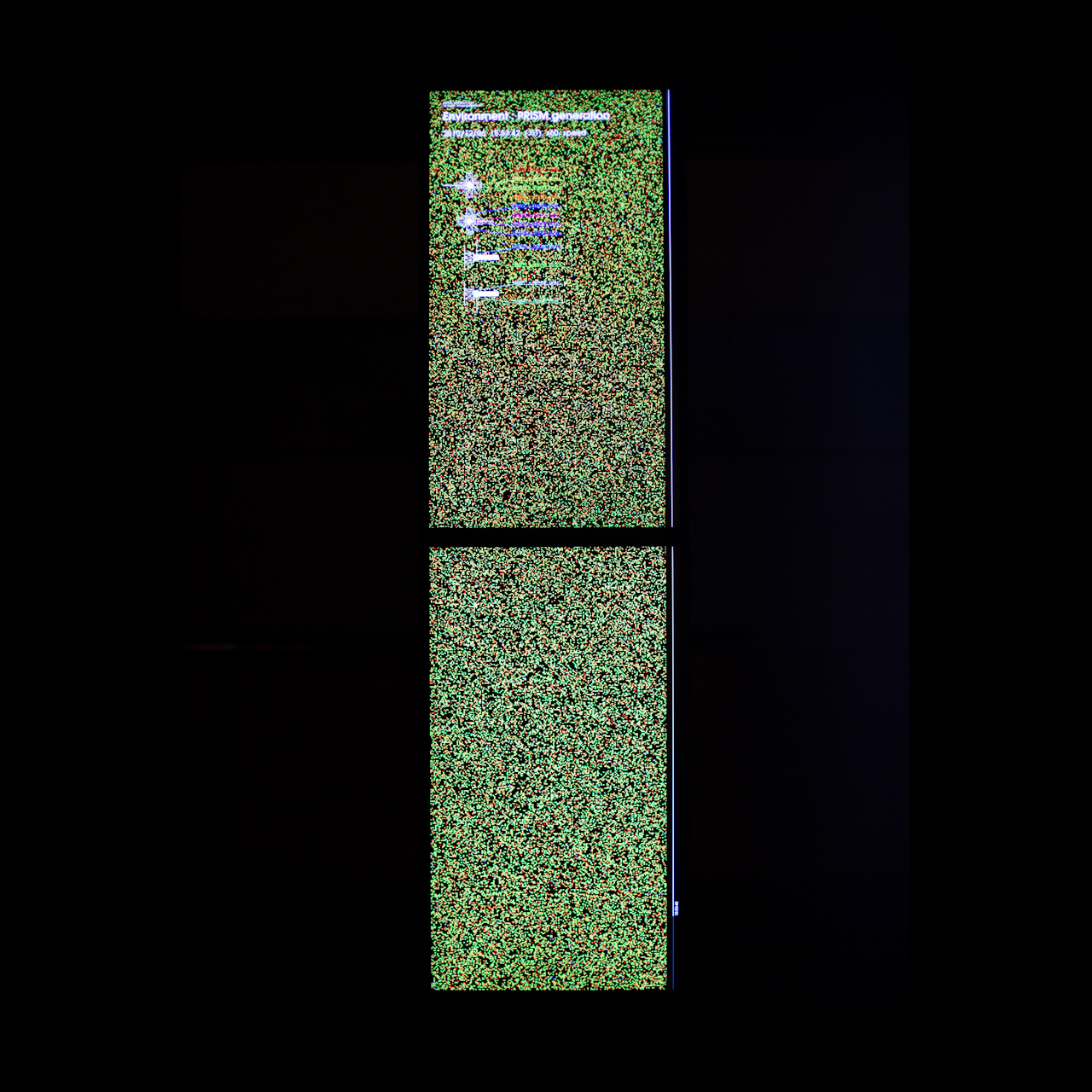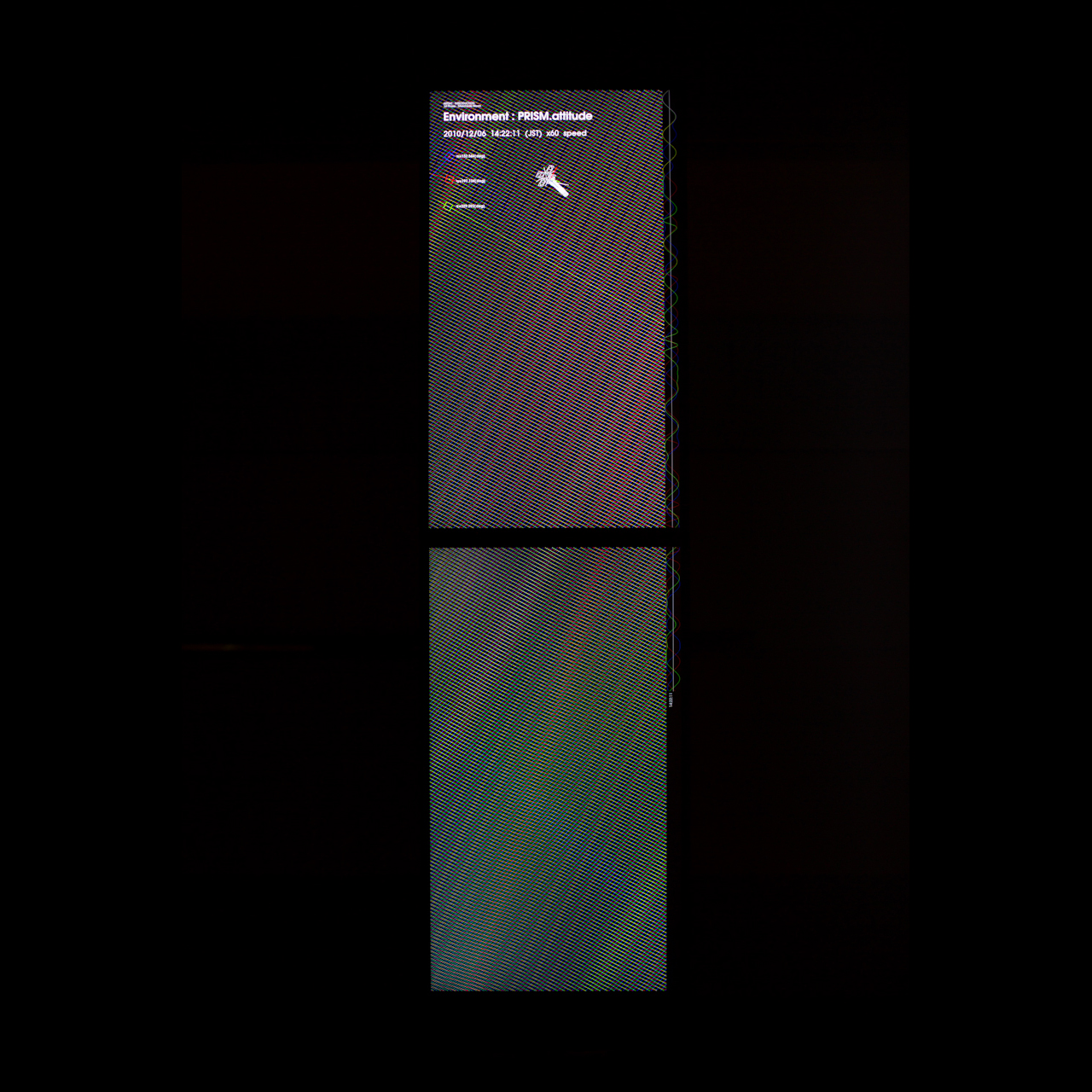

作品解説
宇宙は、材料が揮発してガスが発生・付着したり、材料間の凝着が起こるほどの「高真空」や、浮遊物がショートをおこしたり、可動を妨げる「微小重力」、電子機器に動作不良や損傷を与える「高放射線」、さらには「宇宙塵」や「宇宙ゴミ(デブリ)」の存在まで、地上では想像しがたい過酷な環境です。熱の問題ひとつをとっても、6000度の太陽と絶対零度に近い宇宙空間の狭間で、日照側では100度以上、日陰側ではマイナス数十度という大きな温度差があるうえ、真空かつ微小重力のため空冷や対流による温度差の緩和が期待できません。そうした環境の中、コンピュータを正常に動作させ、高温・低温に弱い充電式バッテリーを守るためには、精密な解析やシミュレーションと適切な設計が必要不可欠です。
第2のターミナル「環境」は、軌道上における衛星の温度や姿勢、衛星をとりまく地磁気といった環境を、時間軸に沿ったかたちで、直感的に可視化するターミナルです。たとえ開発者本人であったとしても、衛星の軌道上に実際に行くことはできません。衛星は、一度打ち上げると、二度と手に取って見ることができません。そんな衛星がおかれる環境をよりリアルに「感じる」ことは、本プロジェクトの1つのテーマです。そこでこのターミナルの表示には、現在運用中の東京大学の超小型衛星PRISMから送られてきた、リアルなセンサーデータを用いています。
データ提供:東京大学中須賀研 PRISMチーム
With states of "high vacuum" that causes the outgassing (release of a gas that was dissolved, trapped, frozen or absorbed) or cold welding (process in which joining takes place without fusion/heating) of materials; microgravity in which floatage triggers short circuits or impedes mobility; high radiation inflicting damage or failure of electronic devices; and in addition, "cosmic dust" and "space debris" flying around, space is an environment with extreme conditions that are hard to imagine on the ground. Looking at the issue of heat alone, between the 6,000°C hot sun itself and outer space with a temperature close to absolute zero, there are huge temperatures differences, ranging from over 100°C at places irradiated by the sun, and several dozen degrees below zero at points the rays of the sun don't reach. As we are talking about a vacuum plus microgravity situation, there is no air-cooling, and no convection currents that could mitigate the thermal differences. In order to ensure the normal function of a computer in such kind of environment, and protect the vulnerable rechargeable batteries from high and low temperatures, accurate analysis and simulation, and appropriate design are imperative.
At Terminal 2 "Environment", the temperature and position of the satellite in orbit, as well as geomagnetic forces and other environmental aspects surrounding the satellite, are being visualized intuitively in chronological order. As it is impossible to follow a satellite in its orbit, even the developers themselves will never be able touch the satellite again once it has been launched. To make the satellite "feel" its environment in as real a manner as possible is one of this project's central themes. The displays at this terminal are based on actual sensor data transmitted from The University of Tokyo's nano-satellite PRISM that is currently in operation.
Data contributed by PRISM Project Team, Intelligent Space Systems Laboratory, The University of Tokyo
写真をみる
ほかの作品を見る



















